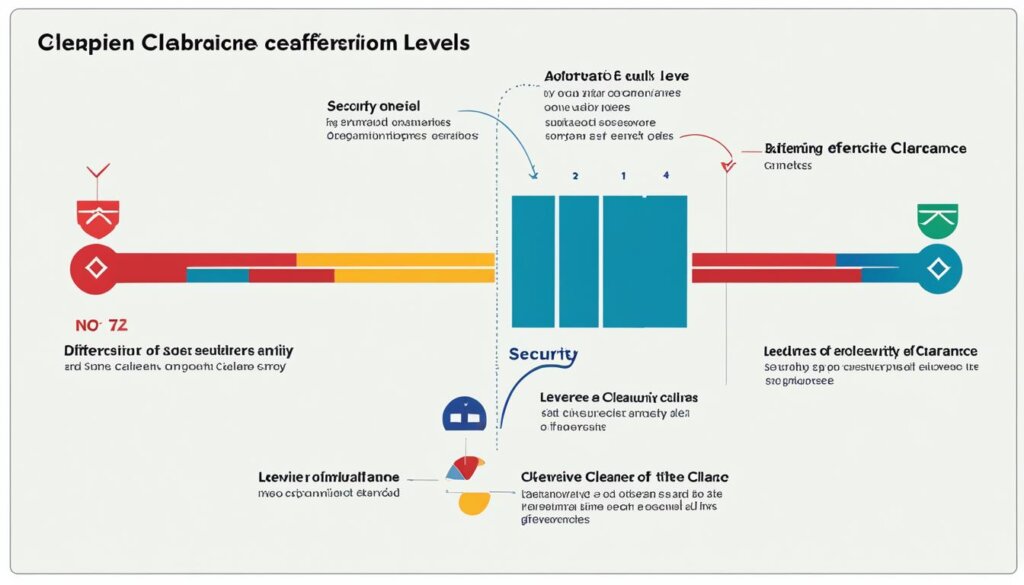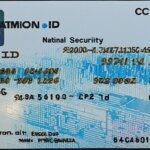Table of Contents
A security clearance is an authorization that allows access to information that would otherwise be forbidden. It is commonly used in industry and government for jobs in information technology (IT) and for access to classified information. There are multiple levels of security clearance, including Confidential Clearance, Secret Clearance, and Top Secret Clearance. The U.S. government has these three types of security clearances for federal employees, and the Department of Defense (DoD) also has a Special Access Program. Security clearance is important for determining trustworthiness and eligibility to hold sensitive positions or access classified national security information.
When it comes to safeguarding classified information, understanding the definition, levels, and importance of security clearance is crucial. Whether you’re applying for a government job or working in the private sector, having the appropriate security clearance can be a key requirement for accessing classified data.
To protect national security, government agencies and organizations establish different levels of security clearance depending on the risk level of the position. These levels are designed to ensure that only individuals who have proven their trustworthiness and eligibility can access sensitive and classified information.
So, what exactly is security clearance, and how does it work? Let’s delve deeper into the process and understand the significance of security clearance for safeguarding classified information.
The Security Clearance Process
The security clearance process plays a crucial role in assessing a candidate’s eligibility to access classified national security information. This comprehensive procedure involves various stages and elements to ensure that individuals entrusted with sensitive positions meet specific requirements. Let’s delve into the intricacies of the security clearance process:
Background Check
At the initiation of the security clearance process, a thorough background check is conducted to evaluate the candidate’s eligibility. This investigation aims to verify personal information, educational qualifications, employment history, and any previous criminal records. The background check is a crucial step in determining the candidate’s suitability for the position and their trustworthiness.
Conditional Offer of Employment and Security Questionnaire
After successfully passing the initial background check, the candidate will receive a conditional offer of employment. They are then required to fill out a security questionnaire, providing detailed information about their personal background, financial history, and other relevant aspects. This questionnaire serves as a comprehensive assessment for evaluating the candidate’s character and suitability for holding a security clearance.
Submission to Hiring Office and Review
The completed security questionnaires are submitted to the hiring office, which acts as the intermediary between the candidate and the appropriate agencies responsible for conducting the security clearance process. The hiring office carefully collects and reviews the questionnaires, ensuring their accuracy and completeness before forwarding them for further investigation.
Requirements and Evaluations
The security clearance process encompasses several requirements and evaluations that contribute to assessing the candidate’s eligibility. These evaluations include an assessment of the candidate’s character, mental health condition, potential for foreign influence, criminal conduct, personal conduct, and credit check. Each aspect is thoroughly analyzed to determine the candidate’s suitability for accessing classified national security information.
Polygraph Test
As part of the investigation, the candidate may be subjected to a polygraph test. This test aims to validate the information provided in the security questionnaire and evaluate the individual’s truthfulness. The polygraph test adds an additional layer of scrutiny to ensure the credibility and integrity of the candidate undergoing the security clearance process.
Temporary or Partial Clearance
In some cases, temporary or partial clearance may be granted before the completion of the background investigation. This allows individuals to start working in positions that require a security clearance while the process is ongoing. However, it is important to note that such clearances are subject to periodic reinvestigations to ensure continued eligibility for accessing classified information.
Levels of Security Clearance
The level of security clearance granted to individuals depends on the risk level associated with their position. Jobs can be categorized as high-risk, moderate-risk, or low-risk, based on the sensitivity of the information they handle and the potential impact on national security.
Security Clearance Levels
There are different security clearance levels established by the U.S. government to safeguard classified information. These levels determine the extent of access granted to individuals based on their need-to-know and their ability to protect and handle sensitive data.
Confidential Clearance: This level grants access to information that could cause damage to national security if disclosed.
Secret Clearance: Individuals with Secret Clearance have access to information that, if disclosed, could cause serious damage to national security.
Top Secret Clearance: This is the highest level of security clearance and provides access to highly sensitive information that, if compromised, could cause exceptionally grave damage to national security.
Moreover, the Department of Defense (DoD) has a Special Access Program that further restricts access to certain types of classified information. This program aims to prevent unauthorized disclosure and maintain the highest level of security.
Security Clearance and National Security
The granting of security clearance is a vital component of safeguarding national security. It ensures that individuals handling classified information are thoroughly vetted and deemed trustworthy and reliable.
By assigning different clearance levels according to the risk associated with specific positions, the government prevents unauthorized access to classified data and minimizes the potential for information breaches.
It’s important to note that security clearance is generally granted only to U.S. citizens. However, in some cases, foreign national employees may be given restricted access to classified information under carefully controlled circumstances.
A clear understanding of security clearance levels is essential for organizations and government agencies to maintain the integrity of classified information and protect national security.
| Security Clearance Level | Description |
|---|---|
| Confidential Clearance | Access to information that could cause damage to national security |
| Secret Clearance | Access to information that could cause serious damage to national security |
| Top Secret Clearance | Access to highly sensitive information that could cause exceptionally grave damage to national security |

Suitability Review vs Security Clearance
The suitability review and security clearance processes are two distinct yet interconnected procedures when assessing individuals for sensitive positions. The suitability review focuses on evaluating the character traits and conduct of an individual, determining their likelihood to act with integrity and efficiency in their job role. It also assesses the impact of the position on the integrity and efficiency of the agency.
On the other hand, the security clearance process delves deeper to determine an individual’s eligibility for accessing classified national security information. It aims to identify any potential security threat posed by the individual. To achieve this, an extensive background investigation is conducted, examining the individual’s conduct, associations, and other contacts.
The level of security clearance required is determined by the sensitivity and risk level associated with the position. This ensures that individuals with the appropriate trustworthiness are granted access to classified information, safeguarding national security interests.
FAQ
What is security clearance?
Security clearance is an authorization that allows access to information that would otherwise be forbidden. It is commonly used in industry and government for jobs in information technology (IT) and for access to classified information.
What are the levels of security clearance?
There are multiple levels of security clearance, including Confidential Clearance, Secret Clearance, and Top Secret Clearance.
Why is security clearance important?
Security clearance is important for determining trustworthiness and eligibility to hold sensitive positions or access classified national security information.
How does the security clearance process work?
The security clearance process begins with a background check to determine a candidate’s eligibility. The candidate will receive a conditional offer of employment and fill out a security questionnaire. The hiring office will collect the completed questionnaires and submit them to the appropriate agencies for review.
What are the requirements for security clearance?
The candidate must meet specific requirements regarding character, mental health condition, potential for foreign influence, criminal conduct, personal conduct, and credit check. The investigation may also involve a polygraph test.
Are there different levels of security clearance?
Yes, the level of security clearance varies based on the risk level of the position. There are high-risk, moderate-risk, and low-risk positions.
What is the difference between a suitability review and a security clearance?
The suitability review evaluates a person’s character traits and conduct to determine their likelihood of acting with integrity and efficiency in their job. The security clearance process, on the other hand, determines eligibility for access to classified national security information and assesses whether an individual is a security threat.
How does the sensitivity and risk level of a position affect security clearance?
The level of security clearance required depends on the sensitivity and risk level of the position. Higher-risk positions may require a higher level of security clearance.







